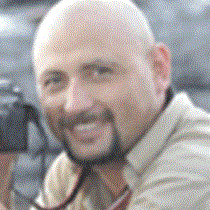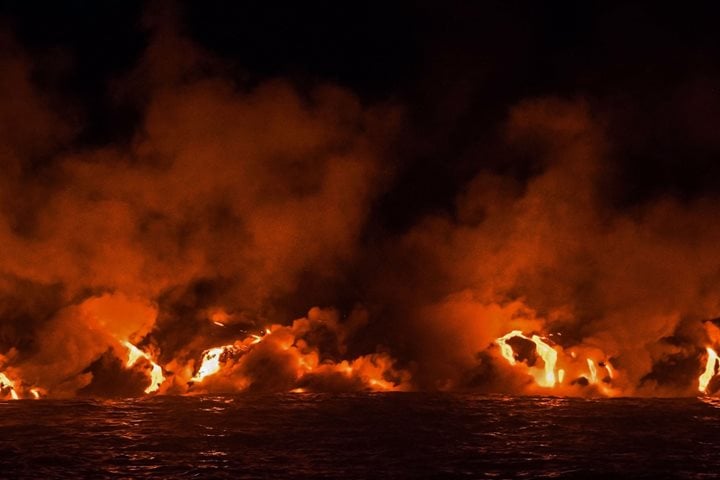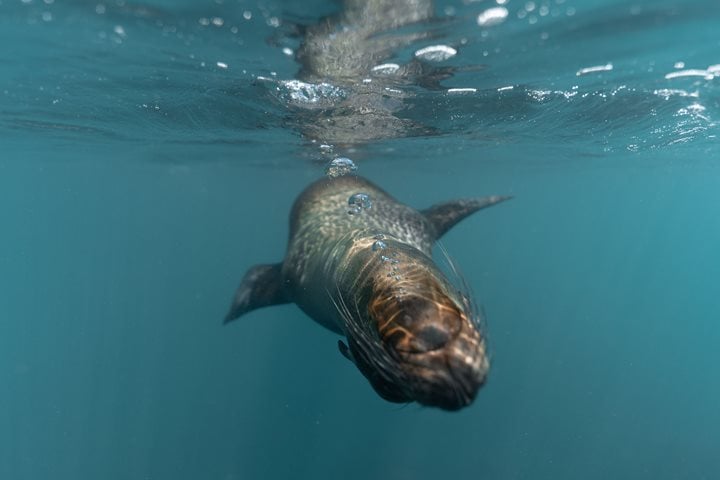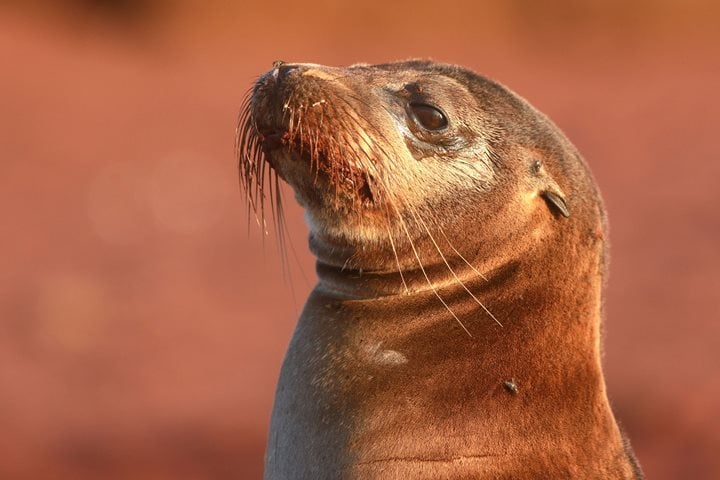After spending the first full day in the central part of the archipelago we set sail toward the newest part of this archipelago. This means all the volcanos are still very active with eruptions typically every few years. We just had spectacular volcanic activity a few months ago.
As the sun was rising on the Pacific Ocean The National Geographic Islander was sailing very close to Wolf and Ecuador Volcanoes on Isabela Island. It was a perfect opportunity to learn about the geology of Galapagos.
This region probably has the most nutrient rich water in the Galapagos, which explains why big marine mammals come to the area looking for food. This location also has one of the largest colonies of marine iguanas, seventy per cent of the Galapagos penguin population, the whole population of Galapagos flightless cormorants, and a vast number of Pacific green sea turtles.
We start our day very early in the morning with a marine mammal sighting of dolphins by the hundreds, feeding and jumping out of the water. Soon after we were celebrating crossing the equatorial line and as soon as we dropped anchor we went out for a Zodiac ride and then finished the first half of our day’s activities with snorkeling in the same area.
The day is far from over yet and we already had the opportunity to enjoy dramatic geology formations, to swim with turtles, cormorants, sea lions, penguins, sharks and many species of fish, too.
After a two hour navigation we arrived at Fernandina Island. From the distance this volcano appears so desolate and barren, but as soon as we set foot on the Island its flora and fauna are very special and most of its flanks are under the process of colonization.
In the afternoon we had a very interesting hike because we had the chance to explore the coastline of Punta Espinoza, with hundreds of marine iguanas and flightless cormorants which are a good example of biological evolution in the Galapagos. This was the perfect location to enjoy the magic of this oceanic archipelago.







